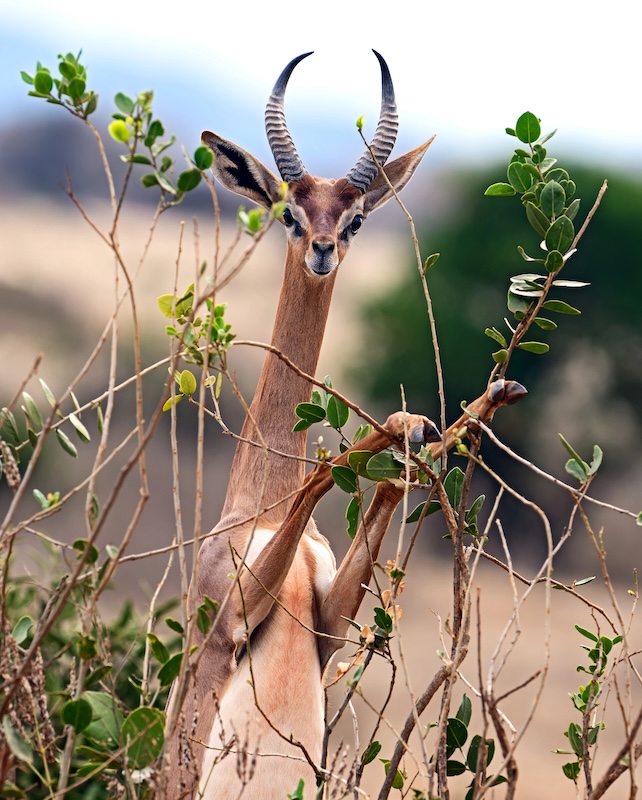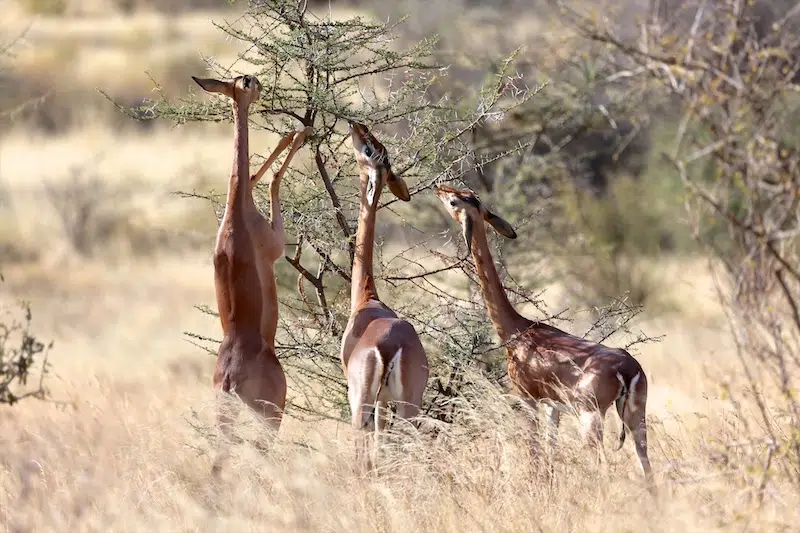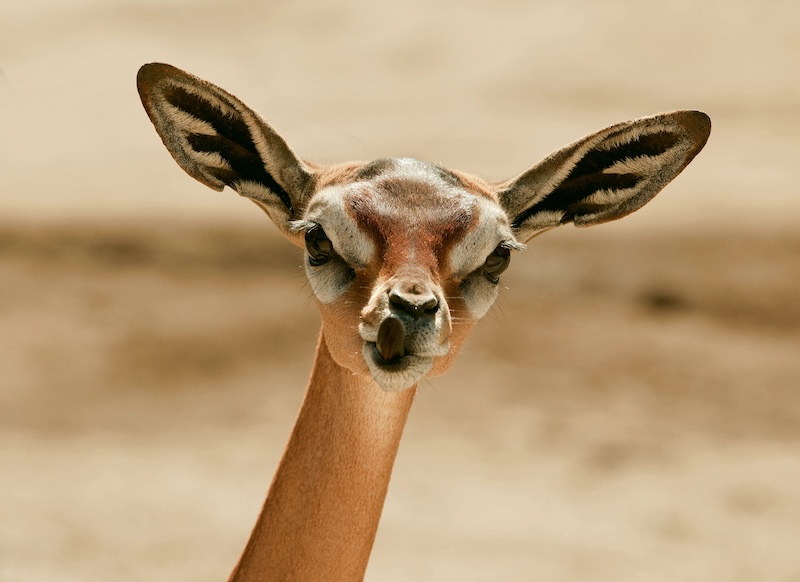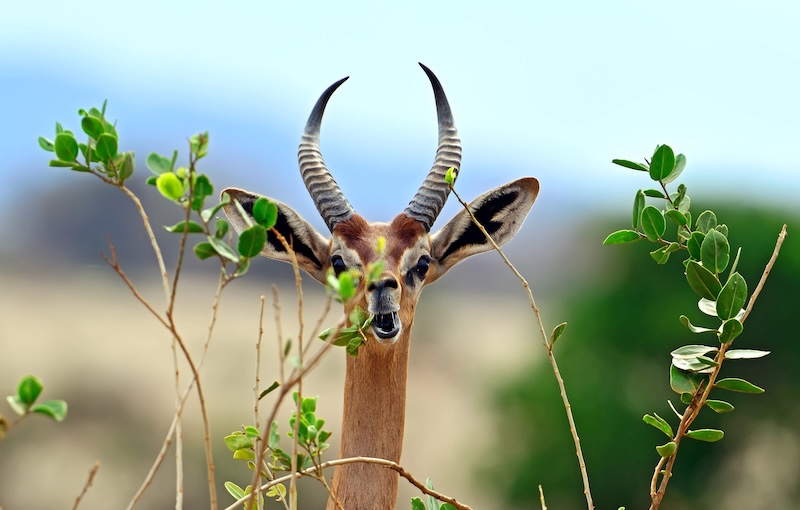Food and water are vital for the survival of all living things on Earth. But what if you didn’t need the latter? The gerenuk, an adorable, long-necked mammal found in East Africa, answers this seemingly improbable question. A subspecies of antelope found in parts of eastern Africa, these animals are uniquely built to withstand the heat and dryness of their habitat. The name gerenuk is Somali for “giraffe-necked,” an apt designation, given these mammals’ extremely long necks.
According to the African Wildlife Foundation (AWF), these cute gazelles have smaller heads than their other cousins, but larger eyes and ears; like other antelope species, gerenuks have a two-tone brown coat, as well as scent glands placed similarly on their bodies that allow them to mark their territory.
More interesting than how gerenuks look is how they feed. In addition to having extremely long necks, these gazelles also eat standing on their two hind legs, sometimes using their front legs to pull down out-of-reach branches. This means that they can extend further heights than a majority of their species cousins. The AWF estimates that a variety of approximately 80 plant species compose the gerenuk’s diet.
This diet, however exclusive, is what allows gerenuks the unique characteristic of not drinking water to survive. These long-necked antelopes prefer to munch on succulents more than anything else. Succulent plants are named as such because they tend to store a high content of water within their leaves and stems, making them the perfect food option for our furry friends. So, while they may seem to be picky eaters, gerenuks have actually gamed the evolutionary system by drawing all the moisture they need to survive from their food sources.
Despite this unbelievable natural advantage, the gerenuk population faces numerous threats to its survival, namely, loss of habitat and fragmentation. With the growth of the human population and settlements encroaching on previously undisturbed land, gerenuks are finding it increasingly difficult to find adequate shelter from predators and reliable sources of food.
The AWF notes that fewer than 100,000 of these creatures remain, and that they have lost a quarter of their population in the last 14 years. This means that these long-necked mammals are dangerously close to receiving a “vulnerable” population status if their situation continues to worsen. An amazing example of survival in one of the harshest climates on Earth, the gerenuk is a natural wonder in and of itself. However, without targeted conservation efforts, these uniquely evolved friends may become another species we lose to human expansion.
To learn more about the gerenuk, visit the African Wildlife Foundation website.
A unique species of antelope in East Africa can survive without needing to drink any water.
The gerenuk, which means “giraffe-necked” in Somali, is classified by the African Wildlife Foundation as one of the most exclusive food browsers.
Gerenuks prefer to eat succulents above all else. This means they can glean all the moisture they need from the food they eat, rather than having to drink water from a direct source.
Despite their unique evolutionary traits, these adorable antelopes are at risk of severe population decline due to human population expansion.
Sources: Gerenuk, The African Wildlife Foundation; Gerenuk (Litocranius walleri), Saint Louis Zoo
Related Articles:
28 Strange Animals You Didn’t Know Existed
Rare Saharan Antelope Is Brought Back From the Brink of Extinction
These Stunning Antelopes in Africa Have Incredibly Symmetrical Spiral Horns
Spotless Giraffe Considered the Only One in the World Is Born at Tennessee Zoo























